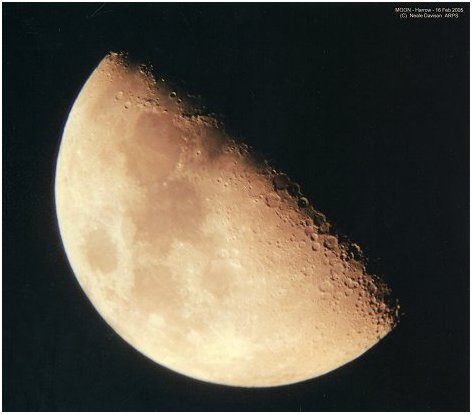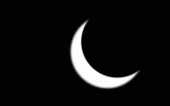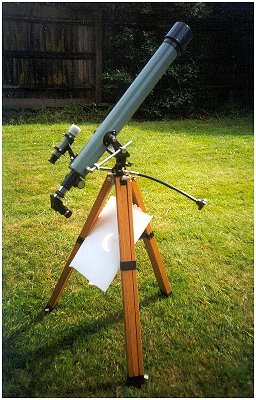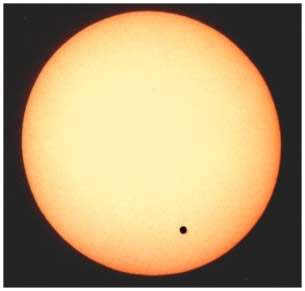Half Moon
Taken in Harrow in 2005 using an amateur 3 inch refractor telescope and a simple compact digital camera hand-held next to the eyepiece.
Hardly any camera shake, but that was more luck than anything else.

Half Moon
Taken in Harrow in 2005 using an amateur 3 inch refractor telescope and a simple compact digital camera hand-held next to the eyepiece.
Hardly any camera shake, but that was more luck than anything else.









Five Planets seenTogether Jupiter, Saturn, Mars and Venus seen here in one single frame.
|
|||||
 |
Transit of Venus This transit of Venus took place on the 8th June 2004 and was photographed from Kingswood Warren in Surrey.. The transit took roughly two hours from start to finish, during which time the sky remained cloudless, as indeed it was for the whole day. Notice the lack of sunspots as this was taken as we headed towards a sunspot minimum.
|
||||